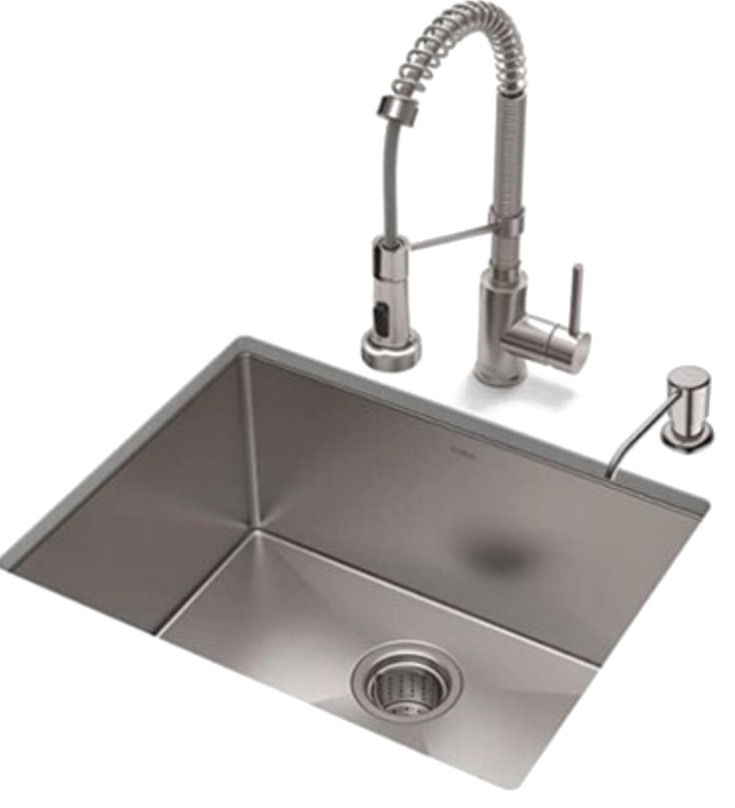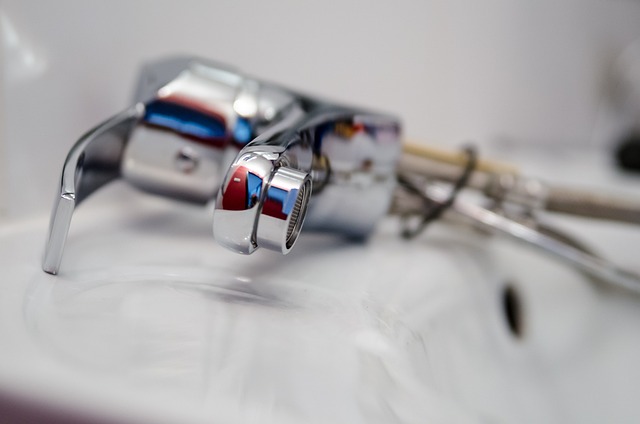A kitchen faucet with a separate handle and sprayer offers both style and functionality. The separate handle controls water flow and temperature, while the sprayer allows for precise rinsing and cleaning. This design enhances convenience and efficiency in the kitchen. In this guide, we’ll explore the advantages, selection tips, and answer common questions to help you choose the perfect faucet.

What is a Kitchen Faucet with a Separate Handle and Sprayer?
A kitchen faucet with a separate handle and sprayer is designed to offer enhanced control and versatility. This fixture consists of two main parts: a central handle that adjusts the water temperature and flow rate, and a distinct sprayer unit that can be used for more targeted tasks like rinsing dishes or washing produce. The separate sprayer typically features a pull-out or pull-down design, which allows users to manoeuvre it easily and reach all areas of the sink. This configuration not only improves ease of use but also helps streamline kitchen tasks by enabling efficient, hands-free operation.
Benefits of a Separate Handle and Sprayer
A kitchen faucet with a separate handle and sprayer brings multiple benefits to your kitchen.
1. Enhanced Flexibility:
The sprayer allows for targeted, powerful water flow for tasks like rinsing produce or cleaning dishes, while the separate handle adjusts water temperature and flow, offering precise control.
2. Improved Efficiency:
Switching between the sprayer and handle simplifies various tasks, making your kitchen work more efficient and less cumbersome.
3. Cleaner Sink Area:
The sprayer’s pull-out or pull-down feature helps you reach every corner of the sink, reducing clutter and making it easier to keep your workspace tidy.
How to Choose the Right Model
Selecting the right kitchen faucet with a separate handle and sprayer involves considering several factors to ensure it fits your needs and kitchen style.
1. Kitchen Layout:
Assess your sink area to determine the best faucet configuration. Ensure the faucet’s height and reach are compatible with your sink size and layout for optimal functionality.
2. Material and Finish:
Choose from materials like stainless steel or brass and finishes such as chrome or matte black. Your choice should match your kitchen’s overall aesthetic and resist wear over time.
3. Installation Considerations:
Decide whether to install the faucet yourself or hire a professional. Consider ease of installation and the compatibility of the faucet with your existing plumbing setup.
By evaluating these aspects, you can select a faucet that enhances both the appearance and functionality of your kitchen.
Comparing with Other Faucet Types
When choosing a kitchen faucet, it is useful to compare a model with a separate handle and sprayer to other types. Single-handle faucets, for example, combine temperature and flow control in one lever, which can be less precise but saves space. In contrast, a faucet with a separate handle and sprayer offers more control and flexibility, allowing users to manage water flow and temperature independently. Additionally, pull-down faucets, which feature an integrated sprayer, offer convenience but might lack the distinct separation of controls that some users prefer. Understanding these differences helps you choose a faucet that best meets your needs for functionality and ease of use in the kitchen.
Conclusion
A kitchen faucet with a separate handle and sprayer enhances both functionality and convenience. Its ability to offer precise control over water flow and temperature, combined with a versatile sprayer, makes it a valuable addition to any kitchen. By understanding its benefits and comparing it with other types, you can make an informed decision that suits your cooking and cleaning needs.




